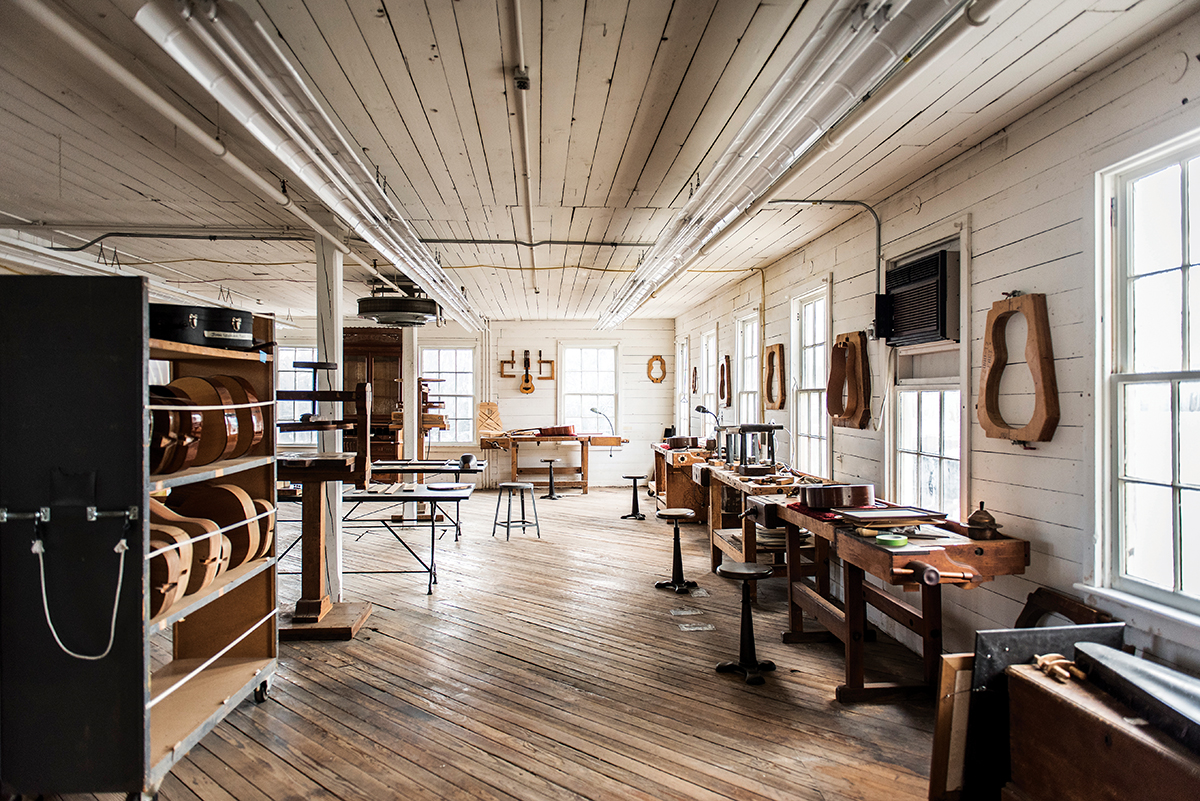Related Tags
A history of CF Martin & Co, an American institution
How did one company founded by a German immigrant become an American icon and the world’s preeminent maker of acoustic guitars?
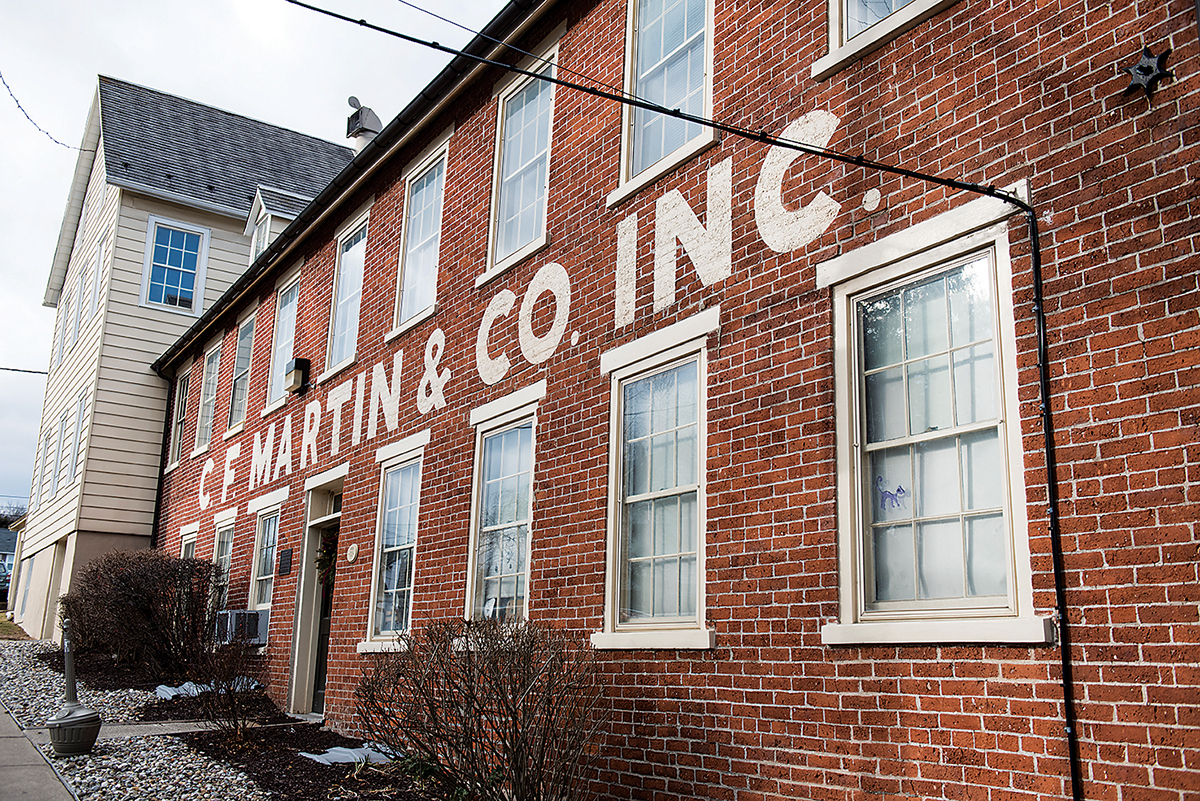
For very nearly two centuries now, CF Martin & Co, a family-owned company from Nazareth, Pennsylvania, has been the world’s preeminent acoustic guitar maker – a reassuring presence in an ever-changing musical world. While rivals have come and gone over the decades, the company founded by German immigrant Christian Friedrich (later Anglicised to Frederick) Martin in 1833 has endured – adapting to new circumstances along the way to ensure that Martin guitars remain a constant presence on stages all over the world.
There have been periods of enhanced popularity where Martin guitars have enjoyed more of the spotlight – the ‘singing cowboy’ boom of the 1930s, the folk and protest movement of the late 50s and the ‘unplugged’ craze of the 90s, to name a few – but there have also been lengthy periods of time when the electric has eclipsed its flat-top sibling in popular consciousness. Despite this, Martin has remained true to what it is – never seriously chasing the electric market or deviating from the aim of building the ultimate acoustic guitar.
The virtues of a good Martin remain the same now as they have for 183 years. And that matters. Even now, as the company brings nontraditional materials into play to combat the scarcity of certain woods and introduces product lines to compete in the intermediate market, Martin remains an iconic brand.
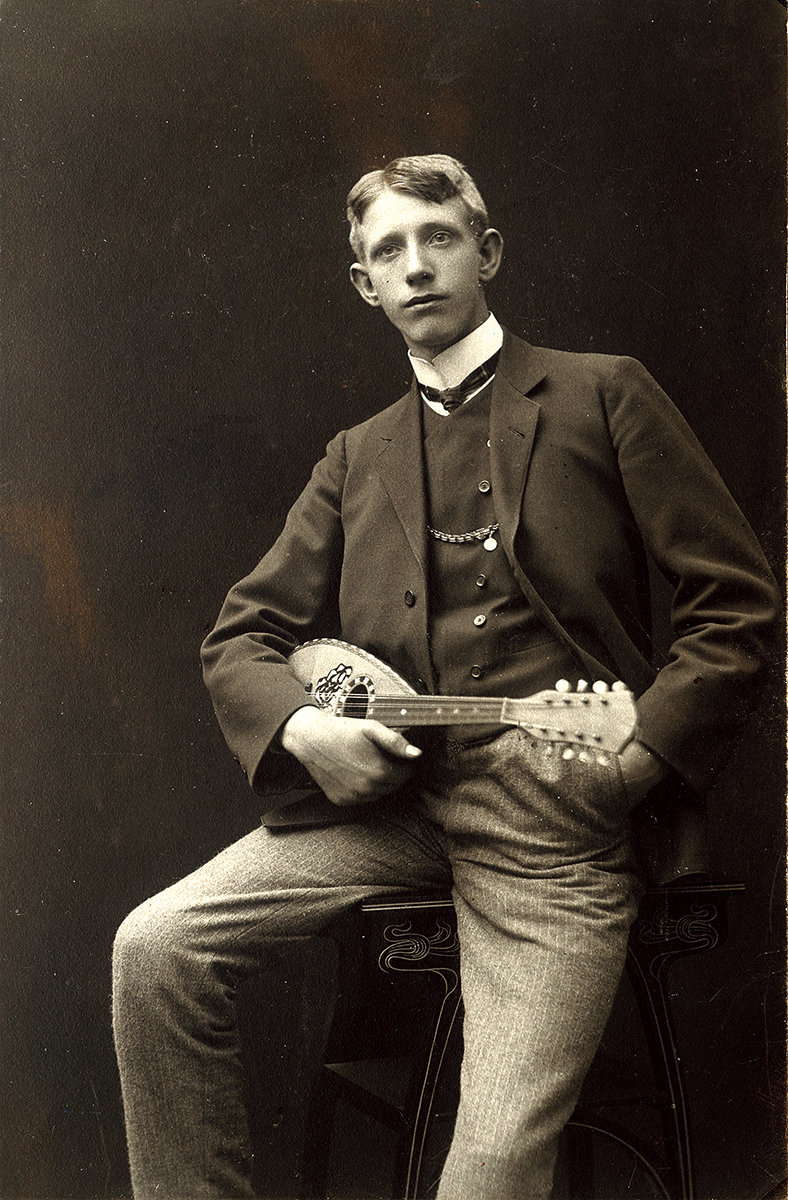
For many of us acoustic guitar players, owning of a Martin guitar is a milestone – connecting you with a heritage that has been a benchmark for quality for longer than many of us realise. Don’t forget, CF Martin was making guitars some seven decades before Orville Gibson established his company, while Leo Fender lagged a century behind. Had Martin not brought the guitar to his adopted homeland, the history of popular music might have been rather different…
Another thing that sets Martin apart from many other guitar companies is its family ownership. The company has never sold out to a multi-national, and current CEO CF ‘Chris’ Martin IV is the great-great-great-grandson of the founder. From a one-man workshop in New York, it grew into a factory in Nazareth – a town where it still has its HQ, and employs some 600 people today.
As previously mentioned, Martin has remained loyal to the acoustic guitar in its history. Yes, mandolins, ukuleles and, for a short time, electric guitars and basses featured in its catalogue, but when you say Martin, you probably picture a classic flat-top acoustic guitar – and that’s for good reason.
The company’s history is celebrated in the Martin Museum, not only a tourist attraction at its HQ, but also a resource for the company as it recreates historic models and develops new designs. The idea of taking a step back to move forwards resonates.
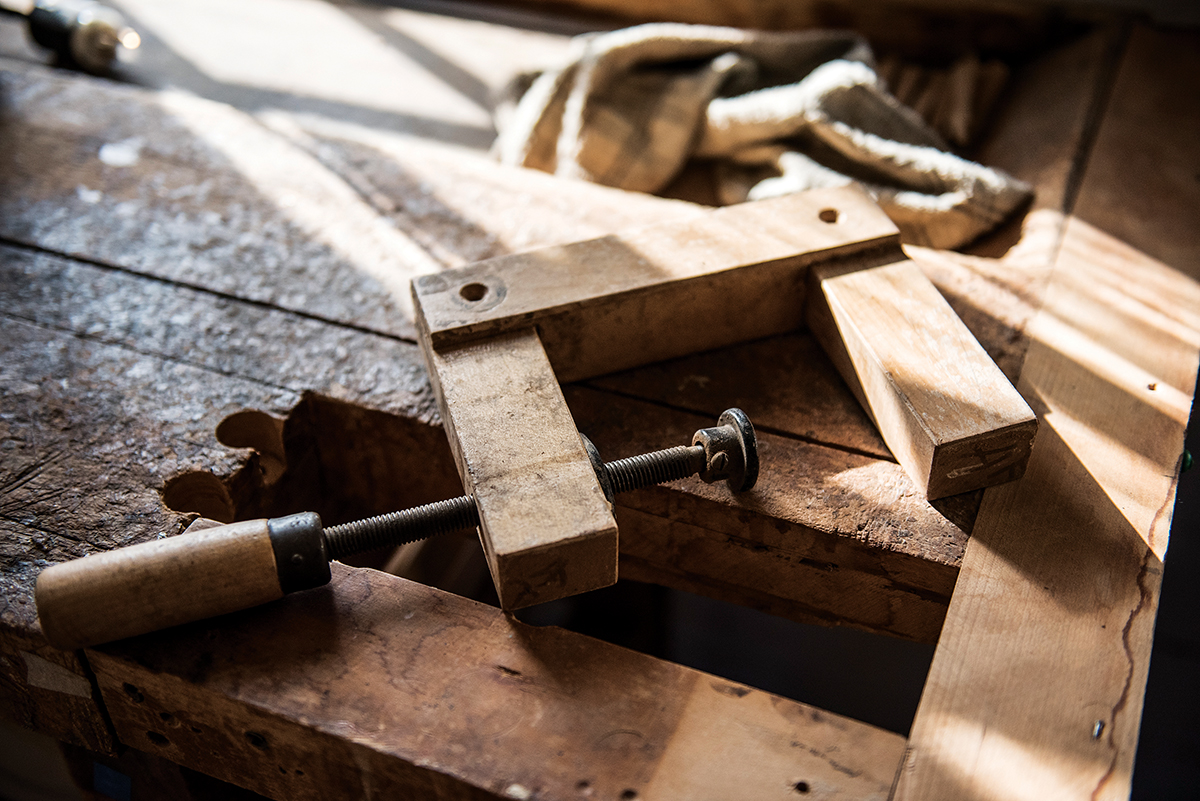
New York state of mind
The guitar was born in Europe but found its natural home in the United States, so the fact Martin guitars have roots in Germany is no surprise. Yet the guitar of the 19th century wasn’t the dominant instrument we recognise today: the banjo and mandolin were to remain keen competitors until the 1930s.
Christian Friedrich Martin was chased out of his native country by makers of a different instrument – the violin. Seeing its superiority under threat, the German violin-makers guild tried to have him banned from guitar manufacture, as he was a member of the rival cabinet-makers’ guild. He won the court case, but, after successfully defending a later one, he decided things would be less hassle in the land of opportunity. He booked his passage aboard a Transatlantic liner and opened a guitar shop on New York’s Hudson Street in 1833.
Having served an apprenticeship to renowned Viennese guitar-maker Christian Stauffer, his first designs bore such Stauffer hallmarks as a headstock with all the tuning keys on one side, a curving bridge design and a neck adjustment system operated by a key inserted near the heel. This unfortunately proved unstable under string tension and was abandoned.
Some Martin guitars made prior to 1840 are branded “Martin & Schatz” and “Martin & Coupa”, acknowledging the network of teachers and wholesalers involved in distributing and selling the early products of Christian Friedrich’s workshop. Heinrich Schatz had, in fact, preceded him in crossing the Atlantic with the intention of making his name in the musical-instrument world.
The main distributors for Martin guitars, Zoebisch & Sons, were based in New York City at 46 Maiden Lane. The link between the companies would endure until 1898, when Martin took on its own distribution. The move to Nazareth had happened in 1839, Martin forsaking his store in favour of full-time manufacture.
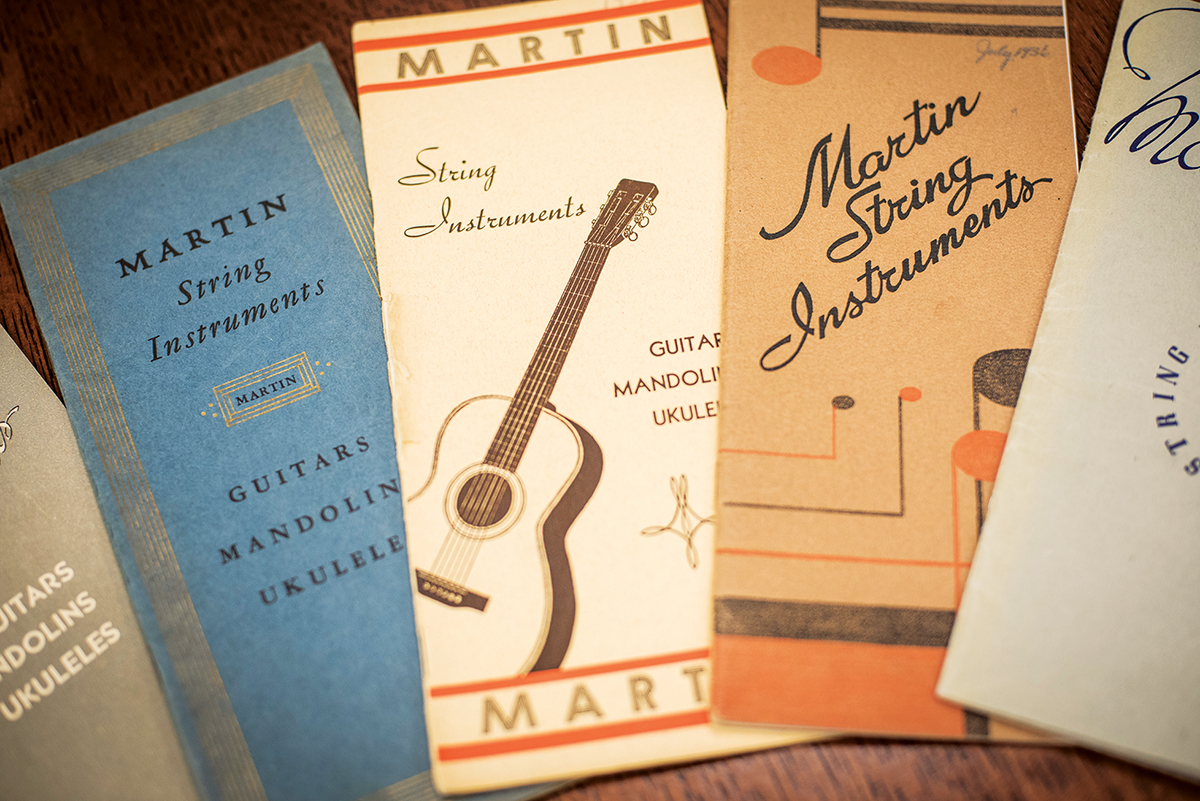
By the late 1840s, Martin had abandoned the Stauffer characteristics and a style of his own was beginning to emerge. European extravagance was now history, slotted pegheads with squared-off corners and rectangular bridges the new norm. Brazilian rosewood was adopted for back and sides, the only nod to fancy ornamentation being purfling around the edge of the guitar, around the soundhole and down the central back seam.
Most important of all his innovations was the X-bracing system. This arrangement of internal struts and braces consisted of two braces forming the shape of a cross across the soundboard below the top of the soundhole, a large transverse brace spanning the width of the upper bout. The bracing system is largely responsible for the distinctive Martin tone characterised by bright treble and resonant bass.
The move from New York to Nazareth – some 100 miles distant and something of a German emigrant enclave – had been a risk, but one that quickly paid off. In an advertisement in 1850 the company declared, “CF Martin, Guitar Maker, respectfully informs the musical public generally that the great favour bestowed upon him has induced him to enlarge his factory in order to supply the increasing demand for his instruments.”
Martin built a factory at the corner of Main and North Streets, on land previously owned by the Moravian church. The since considerably expanded North Street plant is today a luthier supply store called Guitarmakers’ Connection, where budding instrument makers can purchase kits and parts.
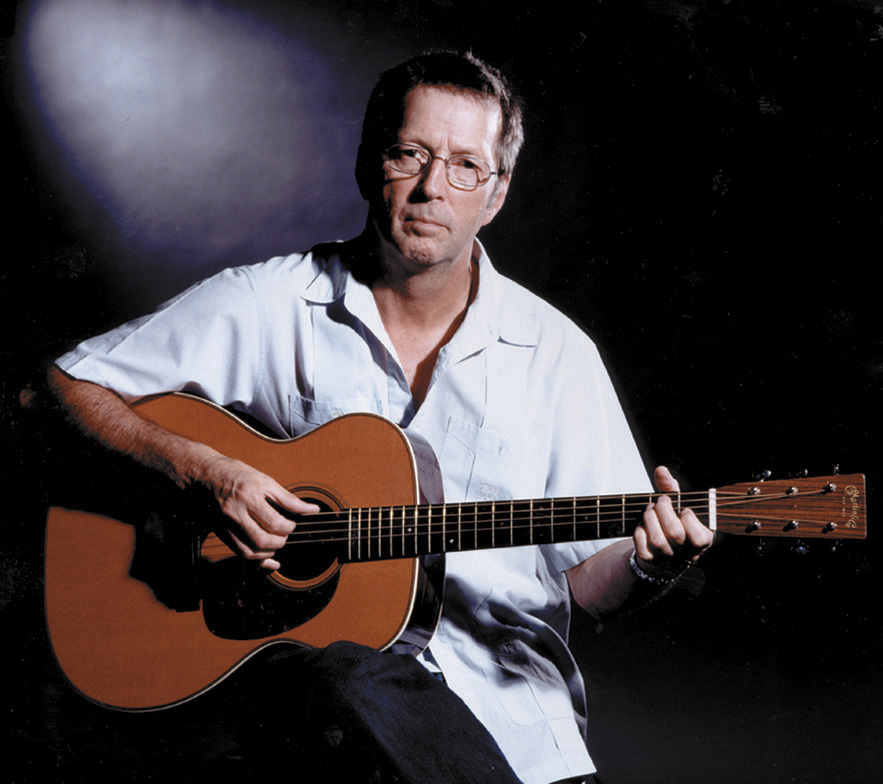
Passing the torch
In 1867, not long after he entered his 70s, CF Martin took on his eldest son as his business partner. German-born Christian Frederick Jr, 48, would take the company forward on his father’s passing in 1873.
Style designations began to be used around this time, Style 17 first being recorded in 1856 and Styles 18 and 27 the following year. Every Martin would have its own two-part model name. The first element reflected size – Size 0, the largest, through to Size 5, the smallest – and the second element the style.
The years of the Civil War (1861-65) were unexpected boom ones for Martin, as the ultra-portable guitar was a popular means of entertainment for the troops. Many didn’t make it home with their players, so had to be replaced. The Martin blueprint was already in place, as exemplified by designs like the 1-40 with its ‘pyramid’-profile rectangular bridge and simple, classic peghead.
The 40 was one of 11 styles in the 1870 catalogue, ranging in size prefix from 0 to 3. The levels of appointment, and therefore price, varied. The 3-17 was cheapest at $36, the 2-42 with abalone soundhole ring and borders the most expensive at $90. The size range was expanded in 1877 with the introduction of the 00, intended to compete in the unaccompanied arena with the five-string banjo.
The unexpected death of CF Martin Jr in 1888 saw his son, Frank Henry, take the reins. The product of a second marriage, 22-year-old Frank had grown up working in the business, like his father and grandfather before him. But he was soon confronted by a major challenge when a dispute arose with long-time main distributors Zoebisch & Sons. Ties were cut and Martin took on its own distribution. One of the reasons for this seems to have been Frank Henry’s introduction of a line of mandolins.
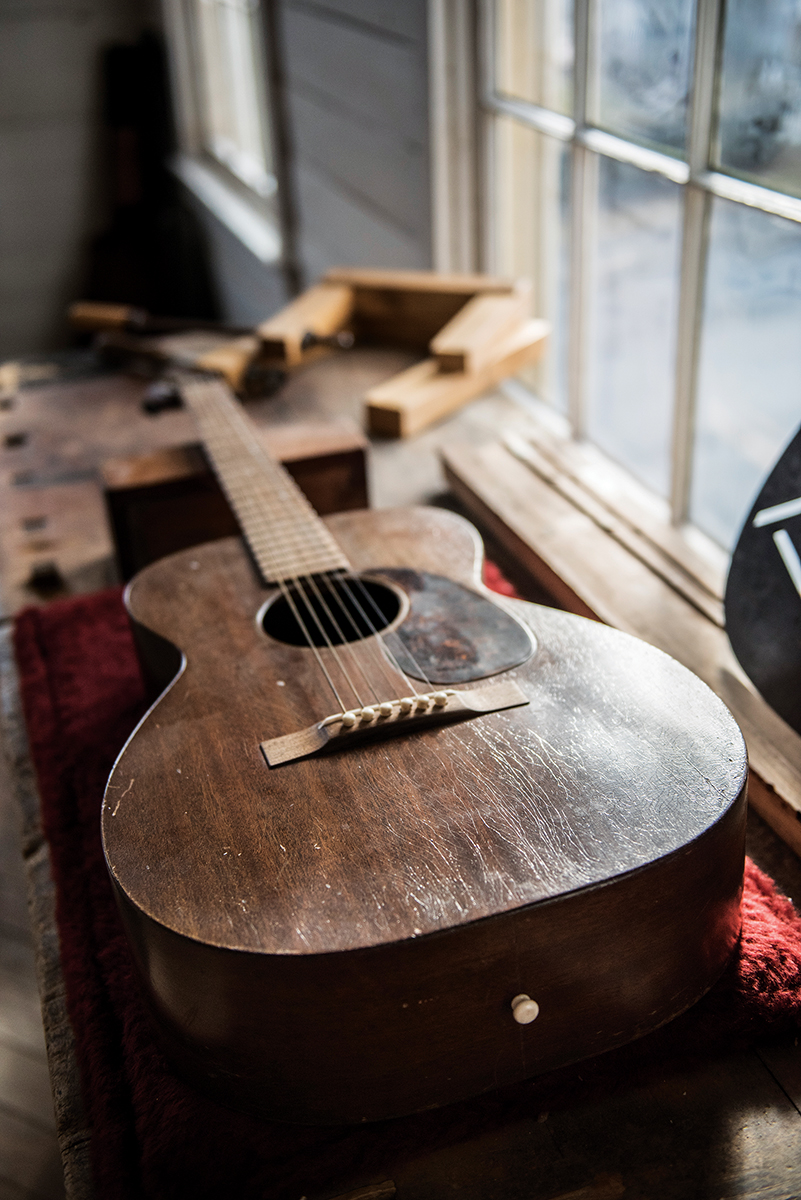
The mandolin was the up-and-coming stringed instrument of the day, tuned like a violin and popularised by the influx of Italian immigrants into the US. Company records reveal that mandolin production went from just three instruments in 1897 to 113 the following year – a shot in the arm with guitar production a mere 220 units. Zoebisch’s reluctance to promote Martin’s mandolins remains unexplained, but, following the split, instruments were branded “Nazareth, Pa” rather than “New York” as previously.
Not that Martin had forsaken the humble guitar. Martin products of the later 19th century were exhibiting a style all their own, the instruments’ clean, uncluttered lines already on their way to classic status. And Frank Henry Martin was keen to alert the public that quality was his company watchword.
“How to build a guitar to give this tone is not a secret,” he insisted in his preface to the 1904 catalogue. “It takes care and patience. Care in selecting the materials, laying out the proportions and attending to the details which add to the player’s comfort. Patience in giving the necessary time to finish every part. A good guitar cannot be built for the price of a poor one, but who regrets the extra cost for a good guitar?”
This ‘quality first’ philosophy was reflected in the materials that Martin adopted as standard. Brazilian rosewood and Honduras mahogany, the latter introduced in 1907, remained tonal benchmarks for the rest of the 20th century. Competitors often used birch and maple on their tops and backs, sometimes painting it to emulate the rosewood. But even on Martin’s cheaper lines, the 15 and 17 series, while they lacked fancy trimmings and body binding, were made of solid wood throughout.
Quality not quantity
As a result of this, Martin’s entry-level instruments were, understandably, more expensive than the competition. The most affordable Martin in the 1900 catalogue would set you back $25, as opposed to $10 for a similarly playable competitor.
Gibson was Martin’s chief rival as the 20th century began. Martin always favoured the flat-top design with a round soundhole, while Gibson, established 1902, initially reflected its heritage as a mandolin maker with archtop guitars. The archtop, whose contours resembled the violin and other stringed instruments, produced a different tonality than the classic Spanish design on which Martin’s products were based.
Martin targeted the top end of the market, never exceeding 20 per cent of Gibson’s output. But that’s not to say the company didn’t react to this new threat. Gibson’s archtop jazz guitars measured 18 inches wide, giving them a size advantage over the biggest Martin, the 00. In 1902 Martin responded with the 15-inch 000. In an early echo of today’s environmental concerns, 1918 saw elephant ivory give way to ivory-coloured celluloid (‘Ivoroid’) for bindings and ebony for bridges.
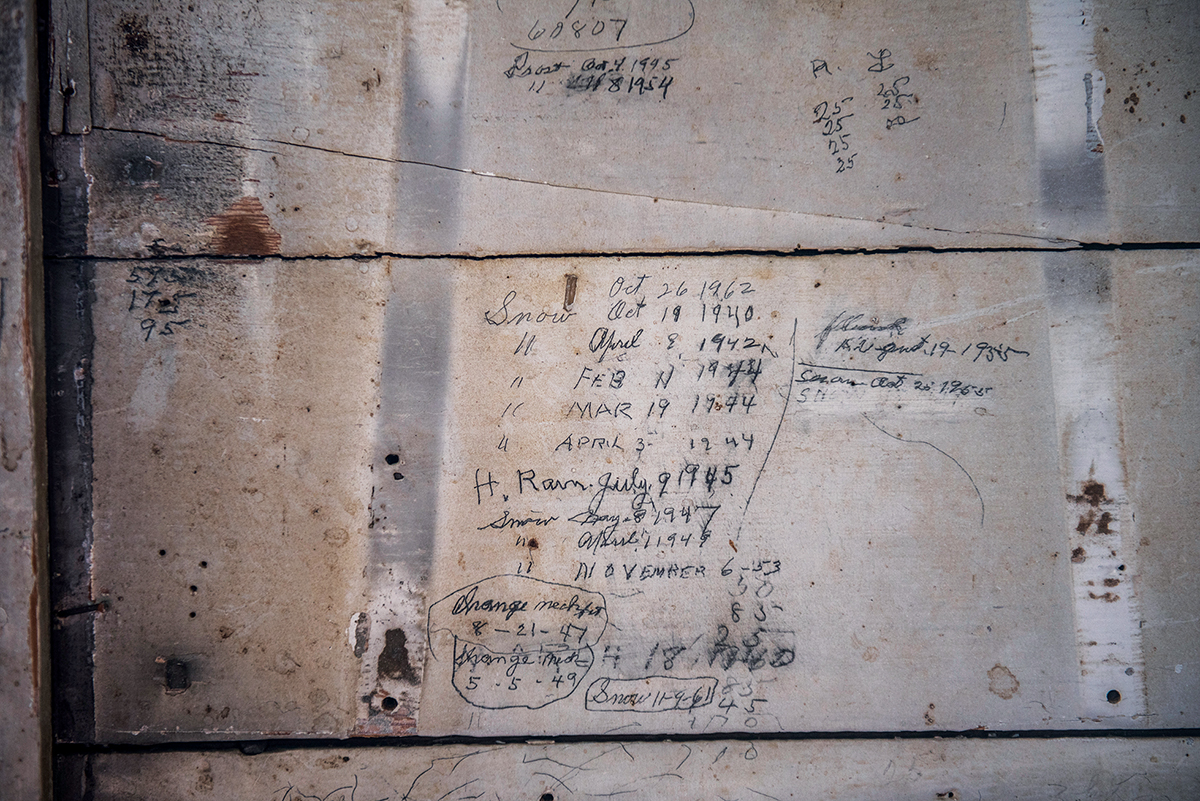
Frank Henry Martin was very much hands-on in selling his company’s guitars and mandolins. The majority of the company’s output was personally sold to dealers in New York State and New England, while advertisements in local newspapers stimulated direct sales. Guitar production in 1920 totalled a respectable 1,361 units – and 1920 was also the year Frank Henry mounted a wooden plaque in one of the company’s workrooms. It bore the Latin motto “Non Multa Sed Multum” – literally “not many, but much”, but best rendered as “quality not quantity”.
Martin’s mandolins had been much fancier than their six-string counterparts, with engravings and pearl inlays on peghead and pickguard respectively. Frank decided that his guitars could benefit from similar adornment, so pearl fingerboard inlays slowly made their way into Martin’s catalogue; 1904’s Style 45 was particularly opulent, and would remain the top of the range.
But sales of such upmarket offerings failed to take off in the financially troubled first decade of the new century. Even so, Martin wouldn’t compromise on the woods used for construction: the Style 17 introduced mahogany in place of rosewood for the back and sides, while mahogany replaced cedar for all necks in 1916.
If the mandolin had helped boost Martin’s fortunes as the 19th century ended, then another potential rival to the guitar, the ukulele, was to provoke a similar sales spurt in the 1920s. The first Martin ukes had failed to appeal, but by reducing the amount of bracing and substituting mahogany for spruce, Martin’s improved product went on to dominate the market. Nearly twice as many ukes were sold as guitars during the 1920s.
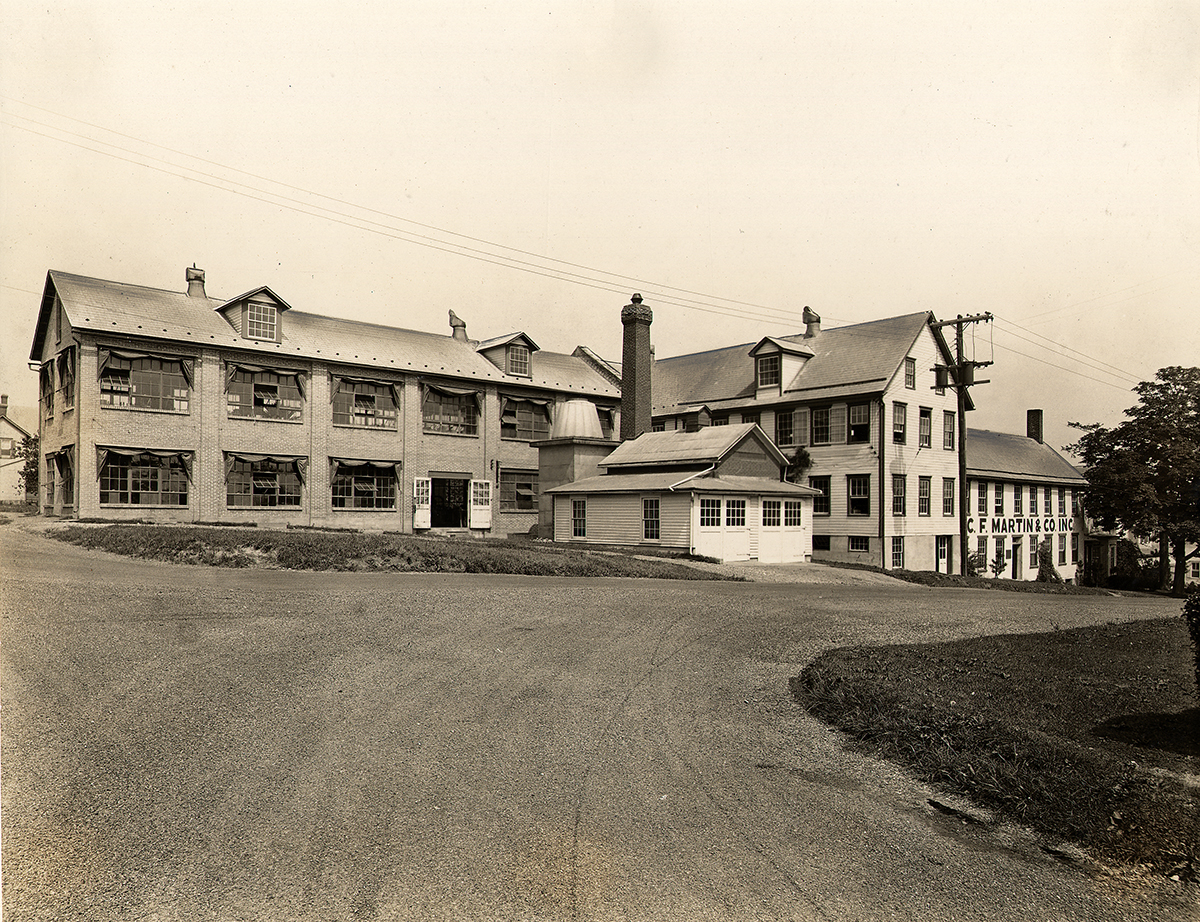
Steel resolve
The sudden passing of sales director (and the late Christian’s brother) Herbert Keller Martin in 1927 came just two years before the Great Depression. This double blow caused the Martin family to abandon hopes of increasing sales and concentrate on survival. Guitar sales dropped by 50 per cent between 1929 and 1931, and a three-day week was reluctantly introduced.
After being forced to cut the pay rate of its workforce, Martin even diversified into producing violin parts and wooden jewellery to keep employees occupied. Few realised in the depths of such national misery that a double turning point in Martin’s – and indeed guitar history – was just around the corner in the distinctive shape of the dreadnought guitar and the invention of the 14-fret neck.
These innovations signalled the beginning of the end for the banjo as a dominant instrument on the music scene. The four-string tenor banjo with metal strings, played with a plectrum, had flourished in the jazz age, but as dance music became smoother, orchestral banjoists came under pressure to ‘double’ on guitar.
Advances in recording technology also worked in the guitar’s favour, and it became more regularly used as a studio instrument. Martin had made the switch from gut strings to steel, and this would lead to an ebony bar being embedded in the neck to counter the tension (a steel T-bar would supersede this in 1934, a steel tube in the 60s and a truss rod in 1985).

The 000 of 1926 that had kicked off Martin’s steel-string period was still a predominantly 19th-century design. But as steel strings became the norm, Martin’s products came into their own. “X-bracing was wrong for gut strings,” present-day retailer Eric Schoenberg comments. “But when the world wanted steel strings and Martin took that leap, it happened to be exactly the right bracing!”
In 1929, Atlanta banjo-player Perry Bechtel inspired Martin to create a guitar that would suit players who intended to convert. Until then, Martin’s products had the traditional 12-fret neck pioneered by Spanish and classical gut-strung guitars. Bechtel’s banjo had 15 frets clear of the body, and it was when he challenged Martin to equal this that history was made.
The result was the 14-fret Orchestral Model (OM) series, so named as it was designed to be played with a pick and replace banjos in jazz outfits. Martin had applied this term to all 14-fret instruments in its catalogue by the late 1930s. The 14-fret neck was so well received that Martin eventually extended the feature to all models in its line and it became the standard for the American guitar industry.
The OM lays claim to being Martin’s most important guitar, and is claimed to be the first truly modern acoustic: Richard Hoover of the Santa Cruz Guitar Company believes it’s “one of the best guitar designs ever – probably the coolest thing that’s happened in the steel-string world.” Yet while the small-bodied OM remains popular today, it was to be eclipsed by the much-imitated dreadnought.
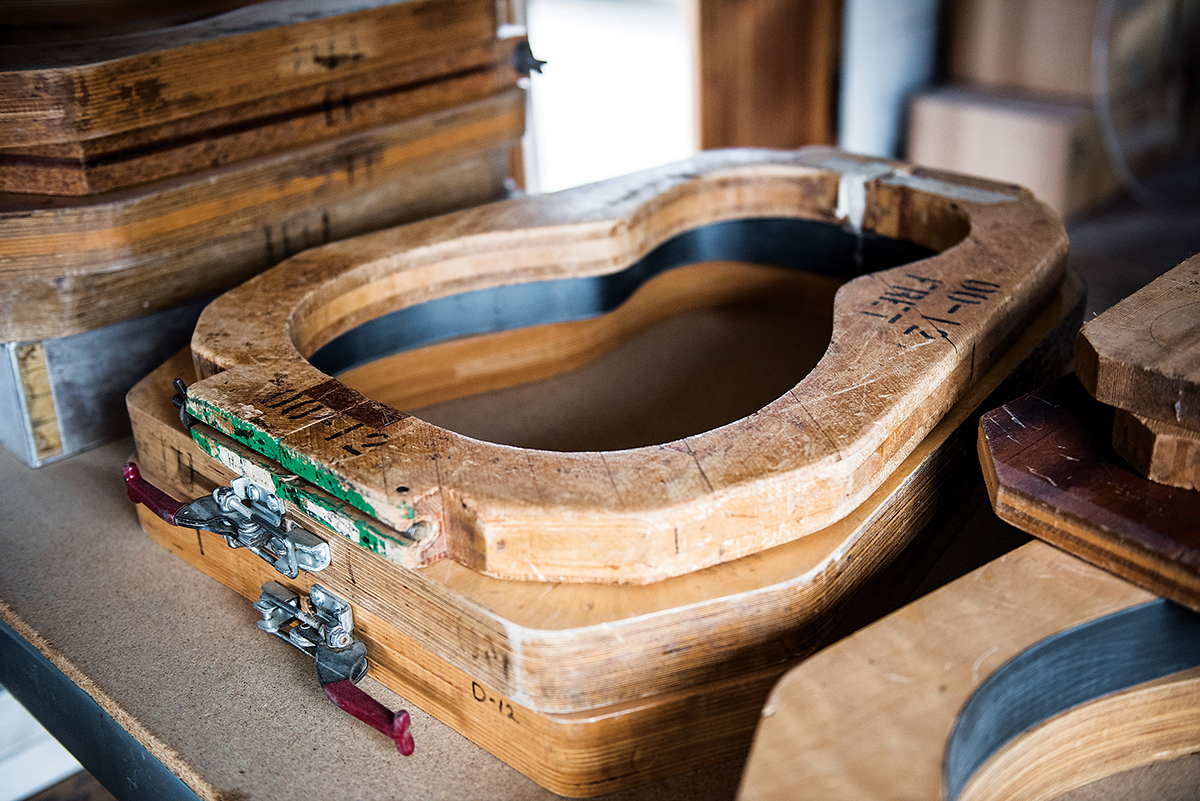
Dread’ locked
The dreadnought had been around since 1916 when examples were sold under the Ditson brand name. It had been developed in partnership by Frank Martin and Harry Hunt, manager of leading music retailer Chas H Ditson, with the intention of creating the ideal guitar for accompanying singers. Its initial unpopularity was deceptive, as it was merely ahead of its time.
Martin fully incorporated the dreadnought into its line of guitars in 1931 and, as folk singing became increasingly popular, sales picked up. The square-shouldered model, named after an unsinkable type of battleship, remains a Martin stalwart today, while virtually every maker of acoustic guitars has a counterpart on catalogue.
The centenary of the dreadnought, dating from its first sighting, was celebrated in 2016 by a film documentary, Ballad Of The Dreadnought, which was screened by a number of prestigious film festivals and is available to view online.
As the amplified guitar became integrated into the jazz band format through the likes of Charlie Christian, its unamplified sister suffered. But country music was to prove the acoustic – and Martin’s – salvation. The D-18 and rosewood-bodied D-28 put the dreadnought on the map in the thirties, while the D-45, custom-made for singing cowboy Gene Autry in 1933, would become a favourite of Neil Young, among others, when it was reintroduced in the late 1960s.

Autry was a huge star at the time and it was he who started a trend of having the artist’s name inlaid in letters on the fingerboard. This may have seemed a trifle crude by Martin’s genteel, restrained standards, but exposure in Autry’s 1934 movie, Tumbling Tumbleweeds, was consolation. Country stars following his Martin example included Hank Williams, Ernest Tubb, Lester Flatt, Hank Snow, Kitty Wells, Red Foley and Eddy Arnold. Elsewhere, ‘Singing Brakeman’ Jimmie Rodgers had been playing Martin’s 00-18 since the mid-1920s, moving to the 000-45 in 1928.
Wartime restrictions on materials caused Martin headaches. The top-of-the-line D-45 was discontinued in 1942 for this reason, after less than 100 had been made. The Style 28’s herringbone wood marquetry was dropped due to supply difficulties – the material was sourced from Germany! – while scalloped bracing was also abandoned; the shift to heavier strings required stronger bracing.
The boom decade
When peace arrived, prosperity and the demand for leisure pastimes meant that demand for Martin guitars exceeded production. This was the first problem faced by CF Martin III, who had assumed the presidency of the company on Frank’s death in 1948, Known as Fred, he was 51 when taking the helm, a comparative veteran compared to his father, and remains today the most accomplished musician to head the family firm.
Fred Martin was not happy with the situation he inherited. “When someone walks into a music store with several hundred dollars and asks for a Martin guitar, he wants it then, not three years later,” he stated. Later, he reflected that “Our lack of production capacity at the time cost us sales and strained our relationships with our dealer family.”
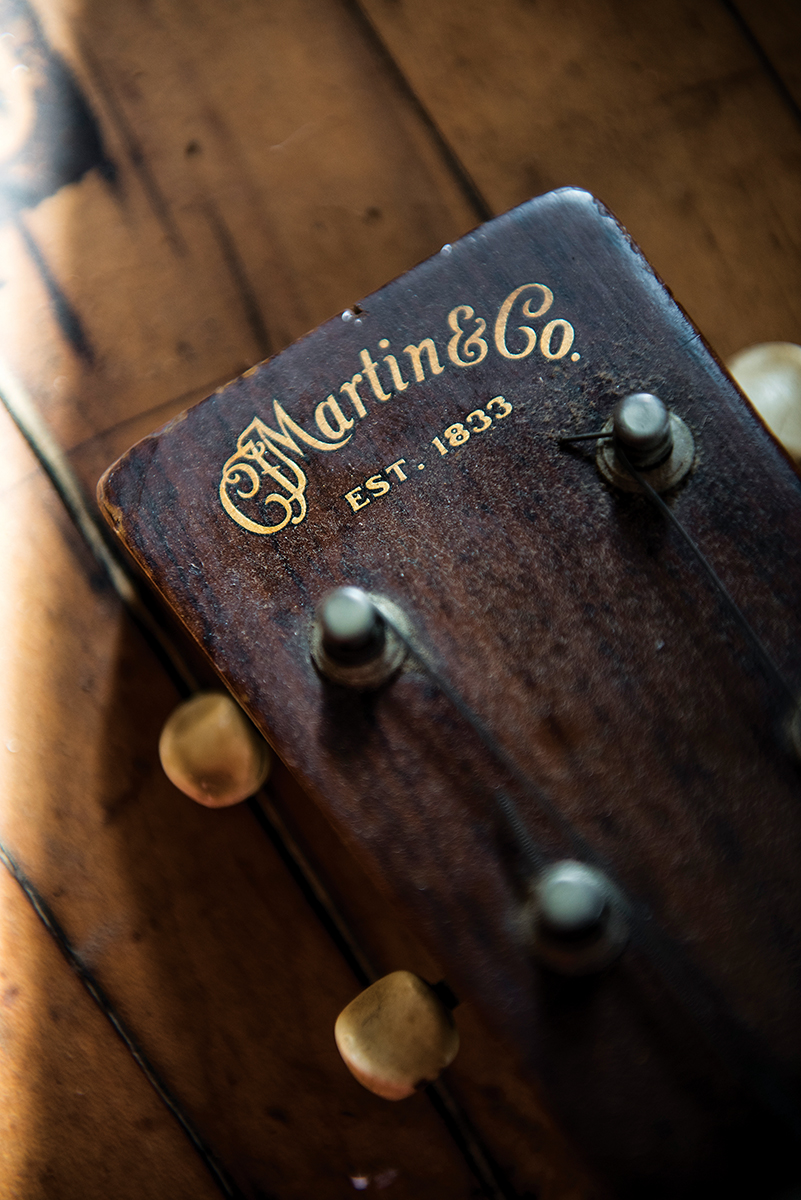
Faced with a 100-year-old factory that had long since hit its annual production limit of 6,000, Martin made the decision to build a larger plant. The new 62,000-square-foot Sycamore Street facility in upper Nazareth was all on one floor and, while craftsmanship remained at the heart of Martin’s methods, the flow of materials meant increased output without sacrificing quality. That was in 1964. The following year saw annual production hit five figures.
This impressive growth spurt had been fuelled by the folk boom of the 1950s. Guitar and banjo had joined forces in the ranks of Flatt and Scruggs and the Weavers, predominant acts in bluegrass and folk as the decade began. Lester Flatt and Fred Hellerman between them made sales of acoustics go through the roof – both played Martins – but the Kingston Trio, formed in San Francisco, broadened the appeal of folk music and guitars in exponential fashion.
Their version of traditional murder ballad Tom Dooley hit Number 1 in 1958, encouraging American youths to pick up six-strings. Their appeal was not based on virtuosity – their hits could happily be strummed along to. You can trace the development of this guitar-based music, overlaid with vocal harmonies, through to the Byrds in the 60s and, the Eagles a decade later.
Any self-respecting songwriter of the 1960s would not be seen without their Martin. Stephen Stills became a collector, and today has an impressive collection of vintage Martins himself. Judy Collins lit up the folk world with her Martin 12-string, while session man-turned-solo star Ry Cooder’s father bought him a Martin 000-18 when he was 10, and it has since featured on nearly all his records. This was Martin’s boom decade: in 1971, 5,466 dreadnoughts were made as compared with only 507 in 1961.
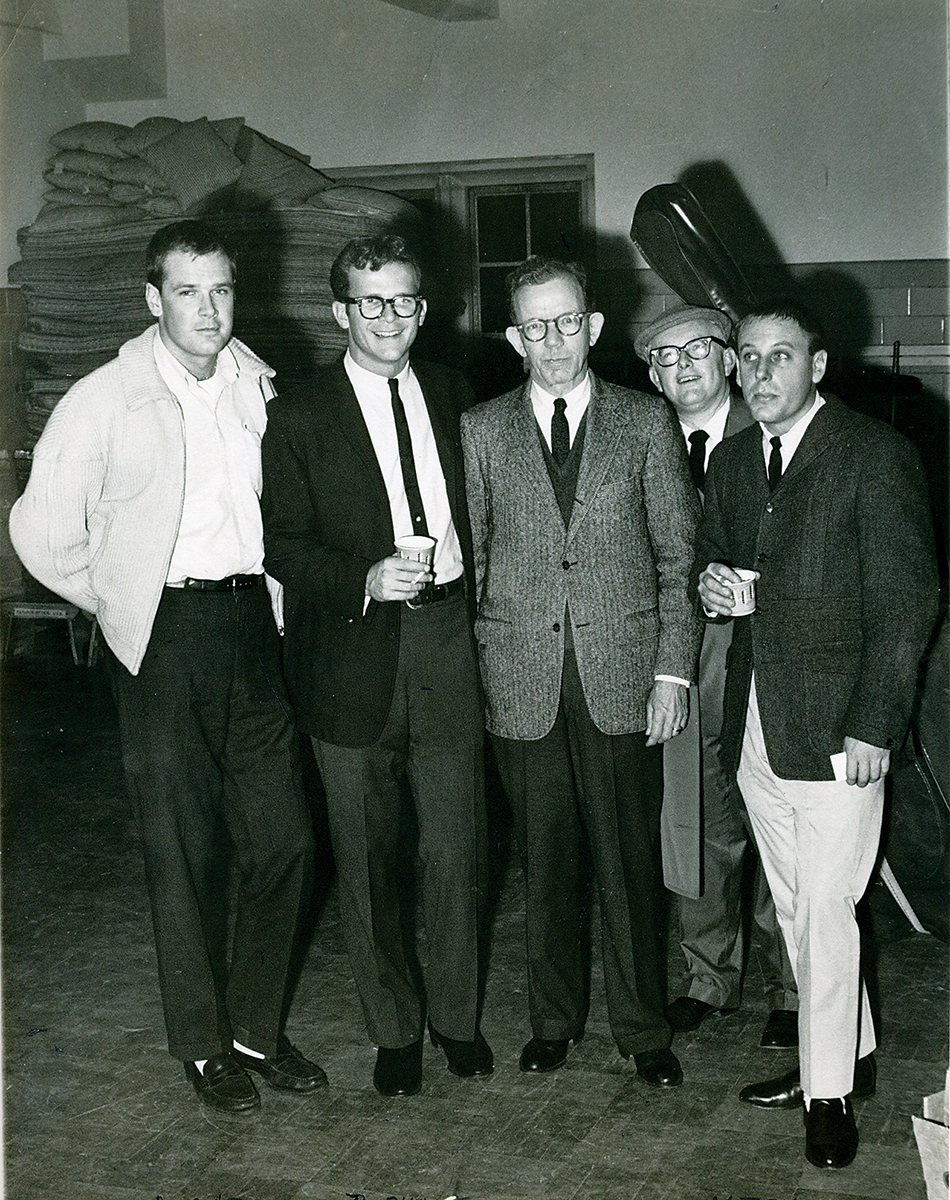
The 1970s found Martin in acquisition mode, diversifying into banjos, drums and – more importantly – strings, via the Darco String Company that still remains part of the family. But guitar production was not neglected, hitting an all-time high of 22,637 in 1971.
A state-of the-art sawmill built to cut imported logs for musical veneer was not a huge success, as Brazilian rosewood imports ceased not long thereafter. This was an early indication of a growing problem, and environmental concerns were to play an increasing role in Martin’s thinking over the following decades. Nevertheless, 26,600 square feet was added to the Sycamore Street facility in 1975 to accommodate new office space, wet spray booths and machine room.
Building abroad for cost reasons began in 1970 in limited form with the Sigma guitar range, manufactured in Japan and, later, Korea or Taiwan. Each instrument was brought into the Martin factory to be inspected and adjusted before going on sale. 2007 was Sigma’s last year of manufacture as a Martin-owned brand. Some lower-priced Martins are now manufactured in Martin’s Mexico facility.
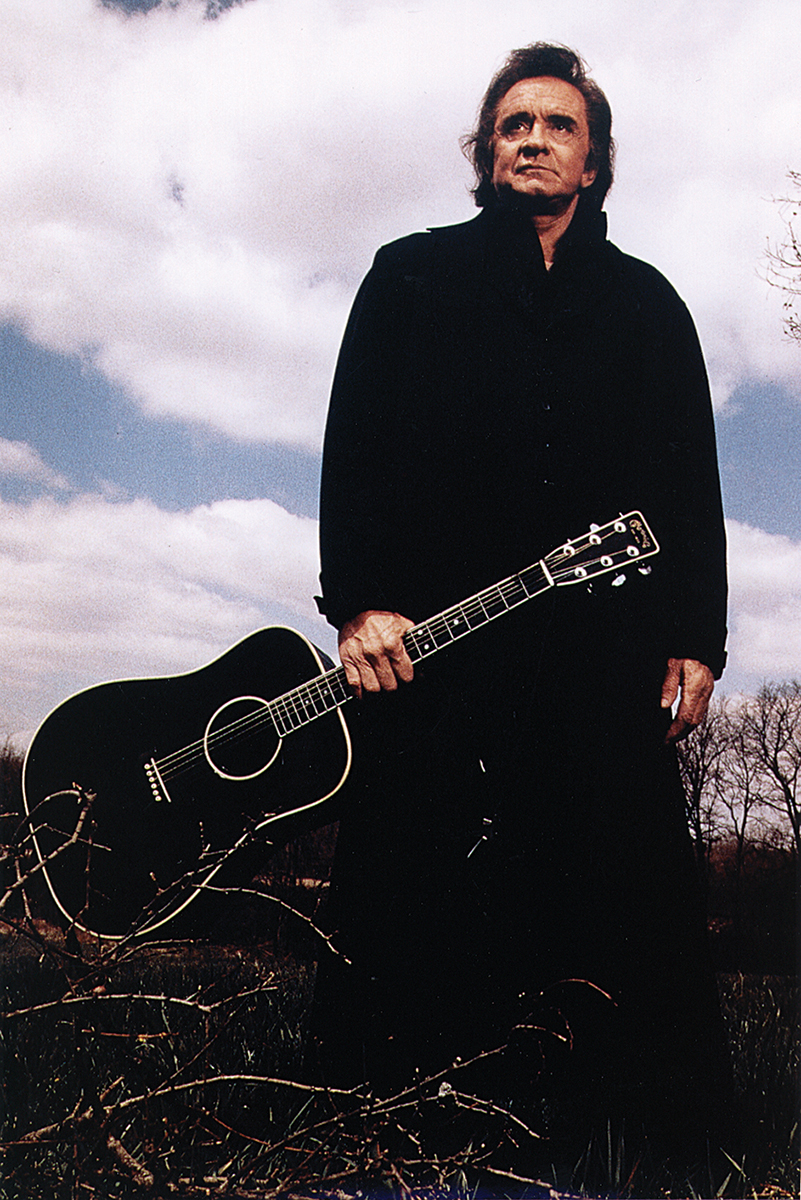
I want my MTV
After spending much of its history building restrained instruments, a flashier side to Martin was gradually emerging. America’s Bicentennial was celebrated in 1976 with the D-76 guitar featuring a pearl eagle headstock and star-shaped fretboard inlays. In 1979, a Custom Shop was opened, while Limited Edition and Special Edition programmes would follow in the 80s.
The helm then skipped a generation. Frank Herbert Martin, who effectively ran the company in the 70s, was not to succeed his father as chairman. Upon CF Martin III’s death in 1986, it was his grandson, CF Martin IV, who was given responsibility for leading into the next century. He remains Martin’s CEO today.
Chris Martin’s arrival from Boston University in the 1970s, with a business degree to his name, happened when demand for acoustic guitars had dropped thanks to the rise of synthesiser-based dance music. “I came back with ideas about continuous improvement, and because of the market, there was willingness here to shift gears,” Chris recalls.
As the disco boom abated, the acoustic received a huge boost thanks to an 80s revival in roots, folk and bluegrass music – not to mention the ‘unplugged’ phenomenon of the 1990s. MTV’s Unplugged series saw artists as diverse as Eric Clapton and Kurt Cobain strap on an acoustic guitar for the benefit of the cameras, inadvertently creating an ultra-fashionable genre that still resonates today with modern Martin players Ed Sheeran and John Mayer.
Clapton, in particular, was key to Martin’s association: his first MTV Unplugged performance in 1992 saw him playing his 000-42. This individual instrument, which achieved even greater notoriety after featuring on the cover of the multi-platinum Unplugged album, was sold at auction in 2004 for $791,500 – then the highest price ever paid for an acoustic. One of 18 Martins sold to benefit Clapton’s Crossroads charity, it has since been exhibited at the Rock And Roll Hall of Fame in Cleveland and the Metropolitan Museum of Modern Art in New York City.

Changing times
But Martin’s domination of the market alongside Gibson had been far from unchallenged. Competitors, most notably Yamaha, had used Asian factories to bring down costs and produce quality instruments in a variety of more affordable price brackets. New entrants such as Ovation and Takamine had made innovations including piezoelectric pickups and onboard electronics industry standards, while companies including Taylor had caught the zeitgeist, using modern manufacturing processes and revisiting classic designs. Could Martin react?
One answer came in the shape of the Backpacker travel guitar, which made history when the crew of the Space Shuttle took one into Earth orbit in 1994. The guitar, with a solid spruce top and solid mahogany back and sides, has also been up Mount Everest.
Back on Earth, Chris Martin was ringing the changes. Martin’s ‘Signature Series’ was launched with the reissue of Gene Autry’s 12-fret D-45S from 1933. The project proved highly successful, and the likes of Clapton, Cash and Marty Stuart would, in turn, be accorded their own signature models. This reversed the long-standing policy not to engage in endorsement deals, the impetus coming in part from Dick Boak, now director of the Martin museum and archives.
Martin’s age and tradition still counted for much, but were not enough on their own to ensure the company thrived rather than just survived. How to maintain its position without diluting the brand was a problem that had to be tackled, and Martin was suitably bullish.
“Under Chris’s direction,” the company proudly stated in 1986, “the company will embark on a new era of computer-assisted production, experimentation in tonewoods, body styles, trims and virtually unlimited custom options.” In 1995 19,500 square feet was added to the factory to accommodate string production.
The introduction of computer-driven machinery was aimed to increase production without losing Martin quality: “State-of-the-art meets state-of-the heart,” as the company literature termed it. The pace of production has certainly increased in recent years: only 14 years would elapse between Martin building its 500,000th guitar, in 1990, and its millionth. (The 500,000th instrument, an HD-28 signed by all employees, remains on display at the factory today.)
Retaining its hard-won reputation as a premium product in such circumstances was quite an achievement. Yet fundamental changes to the acoustic market forced Martin’s hand to offer more affordable products in a bid to attract mid-level purchasers. This involved considering nontraditional construction materials in place of expensive woods (for example sides and necks carved from sipo, a close relative of mahogany), and also building guitars in Mexico where, since the early 1990s, Martin’s Navajoa factory has turned out strings, ukuleles and Backpackers.
X appeal
The X Series, introduced in 1998, had combined revolutionary new materials such as HPL (high-pressure laminate) tops – wood fibres designed to look and feel like natural wood at less cost – and computer-aided manufacturing. Other new materials included Stratabond, a laminated hardwood product used in X Series necks, and resin-based Richlite used for fingerboards and bridges.
As the new millennium dawned, Chris Martin wasn’t prepared to rest on his laurels. “My personal goal is to take our company from ‘Not many, but much’ to ‘Many – and much.’” By the end of 2001, the latest of 780,500 Martin guitars had emerged to back up his words.
But tradition was still accorded respect. A new Martin museum and visitor centre occupying nearly 3,200 square feet opened in 2005. “It has been my dream for many years to expand our little museum into something very special that can do justice in presenting our incredible story to the many thousands of people who visit the factory every year to take the tour,” noted Chris Martin. “Finally that dream has come to fruition.”
By 2004, the millionth Martin guitar was produced, 171 years after CF Martin Sr moved the company to Nazareth; a suitably jewel-encrusted dreadnought marked the occasion.
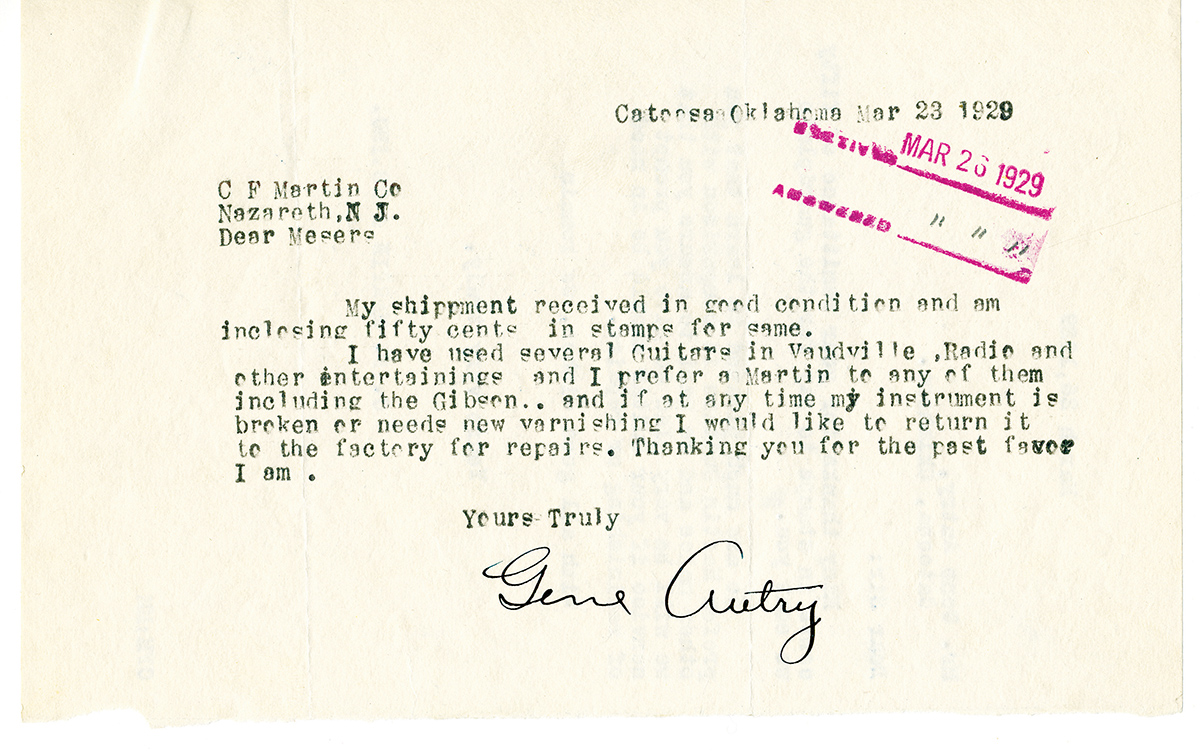
The next half-million instruments flooded out in an amazing seven years. To commemorate the milestone, Martin unveiled the Da Vinci Unplugged guitar at the 2011 Winter NAMM Show. This extravagantly engraved one-off was impressive, but the current crop of less elaborate instruments better reflects Martin’s success in broadening appeal.
The company moved production of its DXM series to Navojoa, in 2004. “Change is difficult, and we decided to make this change ourselves. It’s better than having something uglier being forced upon us,” Chris said.
Ten years later, when Navojoa celebrated its 25th anniversary, Chris Martin was understandably more upbeat, pronouncing it “an extraordinarily positive endeavour on all fronts (that) has allowed us to expand our product line and reach different customers without sacrificing our standard of quality or our domestic workforce.” Having started by employing 12 people, the Mexican headcount had increased to 450 – and not one was at the expense of the Nazareth workforce.
The Mexican-made DRSGT (Dreadnought Road Series) and 000RSGT (000 Road Series), unveiled in 2014, were representative of Martin’s lowest-cost instruments built with all-solid wood. The midrange Performing Artist Series, with cutaway bodies, offered greater hand-detailing and the more capable F1 Analogue preamp and pickup system on acoustic-electric models.
The Retro Series, introduced two years earlier, had combined the look of vintage instruments – D-18E, D-45E, HD-28E and OM-28E – with Fishman electronics and enhanced playability, while the Authentic Series drew on Martin’s history with hide glue and Adirondack spruce tops. A recent innovation, Martin’s Vintage Tone System, aged tops and braces to produce instruments that are supposedly closer to pre-war tonality.
Today’s acoustic guitar market is arguably the most vibrant for decades, with small companies and individual luthiers producing work of outstanding quality. But there is still a place for Martin.
And proof, if any were needed, came in the shape of the company’s two millionth guitar, unveiled in January 2017. This milestone model, based on a D-45 body, featured a custom working timepiece built into its headstock. If any guitar could be said to be a time machine, maybe it was a Martin…
Christian Friedrich Martin brought his guitars to the US, and his successors have succeeded in retaining his company’s position as one of its pre-eminent names. The mission statement on the company website proclaims their aim: “To be an organisation of dedicated co-workers committed to exceptional leadership and innovation in the fretted instrument and string manufacturing industries, while celebrating our heritage and traditions as a family-owned company.”
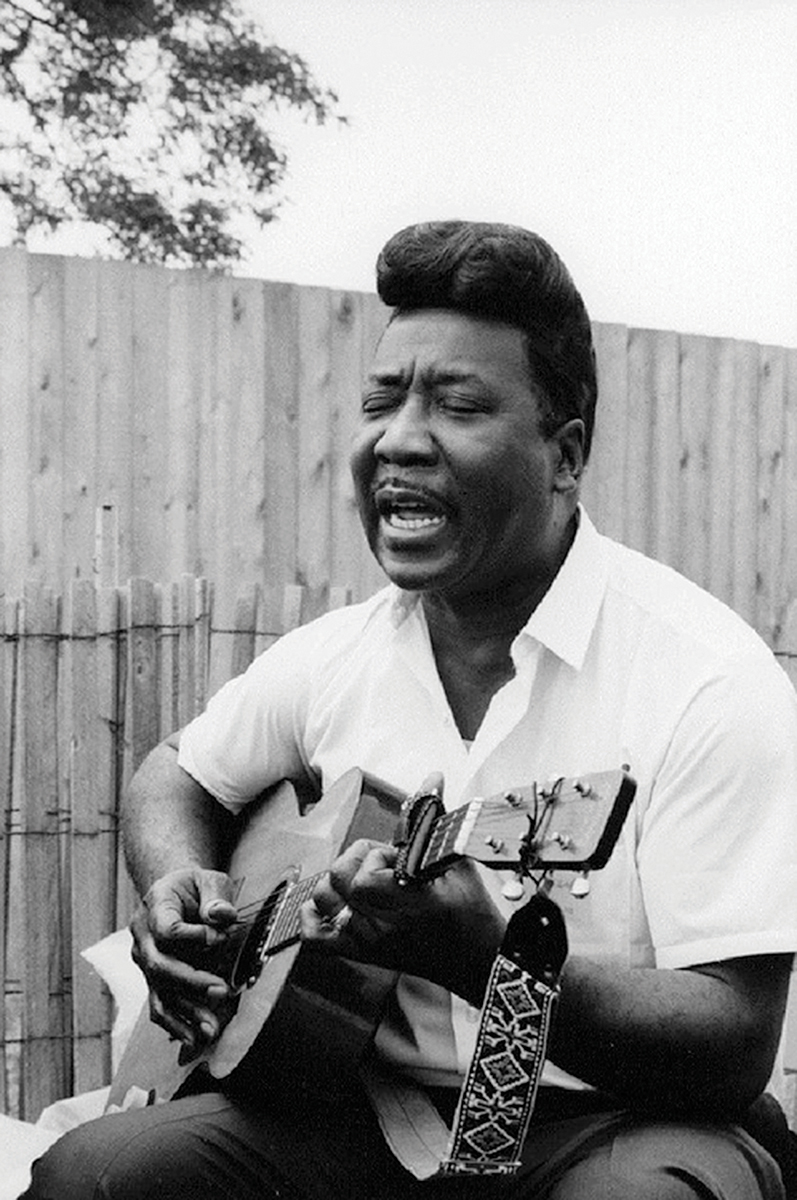
And Martin’s concerns don’t end at the Nazareth county line: in recent years, the company has begun helping communities in other countries become more economically sustainable, reducing their need to clear-cut trees to support themselves financially. A low-energy kiln in a Guatemalan community, for instance, increased the value of the wood they used and, by reusing wood previously discarded, helped reduce the number of trees the community had to harvest.
Artists as diverse as Elvis Presley and Ed Sheeran have been proud to own a Martin in their lifetimes. They may not all have a price tag as rich as the D-28 played by Presley in his last concert, which made $106,200 at auction in 2009, let alone Clapton’s record-breaker, but they’re all part of the rich heritage of one of the greatest American guitar brands.
Photography Eleanor Jane & Martin Archive

